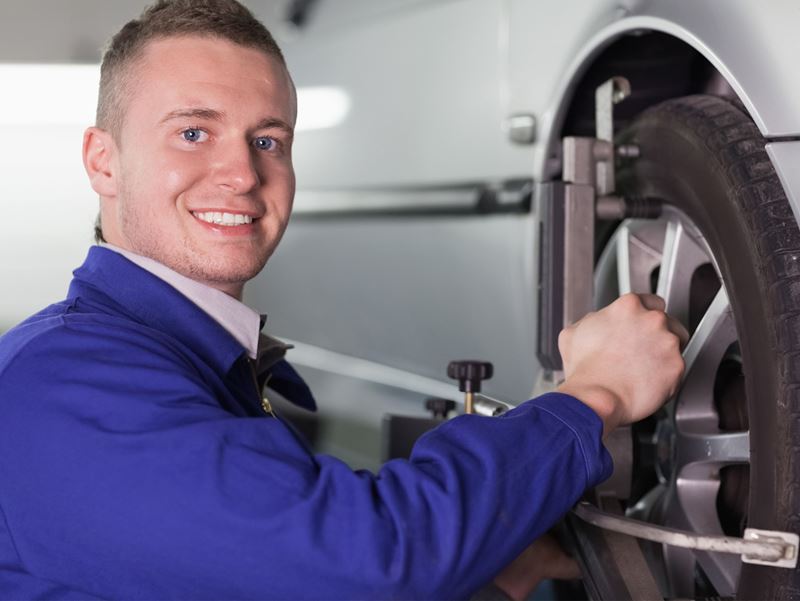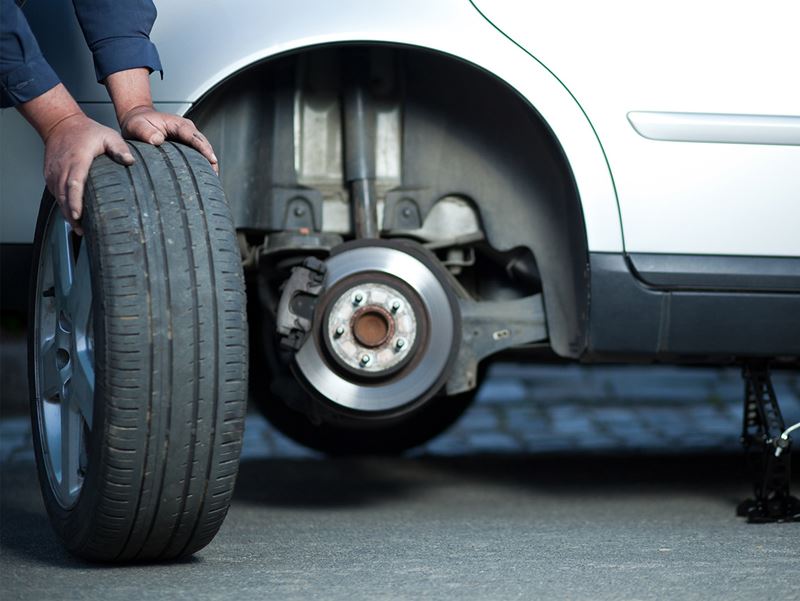Part-worn tyres can threaten your road safety
Even second-hand tyres that appear in good condition to the ordinary motorist may have suffered a serious deterioration in quality. This can have a negative effect on your vehicle's performance with regard to energy efficiency, road noise, and – most importantly of all – safety on the roads.
The Motor Vehicle Tyres (Safety) Regulations Act 1994 was brought into being to prevent the sale of substandard tyres that could contribute to road traffic accidents.
It specified that tyres must meet certain standards relating to the condition of the rubber and the tread depth, as well as being clearly marked as part-worn. The Act also made it obligatory for sellers of part-worn tyres to provide their name and registration number on products.
Unfortunately, investigations from numerous industry bodies, motoring journalists and road safety groups (for example, this year's covert examination of 50 Midlands retailers by the not-for-profit organisation TyreSafe and Auto Express) indicate that some vendors are continuing to fit part-worn tyres that are unfit for purpose.
This has serious implications for road safety in the UK, particularly with historically high fuel and servicing costs incentivising drivers to save money in any way they can.
Inspecting part-worn tyres can be difficult
Many, if not most customers are unaware of retailers' obligations to them, and never consider checking whether their part-worn tyres are marked with the details of their repairer (95% are not, according to a study from the National Tyre Distributors Association).

It is also rare for a customer to see a tyre's condition before it is fitted (to inspect a tyre properly, it needs to be removed from the wheel rim), particularly when products are purchased from online vendors such as eBay. This means that slipshod or unscrupulous retailers can often get away with repairing tears or punctures badly (or not at all) without any comment from the customer.
Part-worn tyres on the road
As the only part of a vehicle in direct contact with the road, tyres play an indispensable role in braking, acceleration, steering, and cornering. A suitable tyre pressure and tread depth, along with the absence of serious abrasions, can be crucial to maintaining control in emergency situations and preventing accidents.
Even if you inflate your part-worn tyres and have their tread depth checked regularly, it is possible that they have hidden faults with the potential to drastically reduce their useful life or affect your safety. If the previous owner did not take proper care of the tyre, you can unknowingly inherit some potentially dangerous flaws.
Habitually driving on tyres that are not properly inflated, for example, can cause structural damage to the inside of the rubber over time. Eventually, the weakening of the material can result in a blowout – which can be very dangerous, particularly when travelling at higher speeds.
The deterioration of the tyre's inside portion, however, may go unnoticed or disregarded when purchased by the unsuspecting second-hand buyer. Consumers can therefore be put in danger by their part-worn tyres, even if they themselves are conscientious in keeping them suitably inflated and in the best possible condition.
Legal limits for tyres
The tread depth of brand-new tyres is generally around 8mm. The legal minimum is set at 1.6mm, although motoring organisations recommend changing tyres at 2mm (most manufacturers advise 3mm).

Nevertheless, it should not be assumed that the performance of tyres remains at the same level until the tread has been all but worn away.
A study from the Motor Industry Research Association indicates that tyres with a tread depth of 3mm perform 25% better than those at the minimum depth of 1.6mm. When stopping at 50mph on a wet road, this reduces the stopping distance of a typical passenger car by around eight metres.
The difference between products which just meet the legal requirements and new tyres with 8mm of tread depth is even more startling.
Research from TyreSafe has shown that a car carrying out a similar test to the MIRA survey (i.e. measuring its stopping distance from 50mph on a wet road surface whilst fitted with different tyres) could stop in 25.9 metres with new tyres, as opposed to 37.8 metres with well-worn tyres boasting 1.6mm of tread depth. The difference of 11.9 metres signified that new tyres reduced stopping distances by 31%.
New tyres are also less subject to aquaplaning on wet roads. Their greater tread depth allows them to prevent a layer of water forming between the tyre and the road surface, preserving traction and retaining control in the event of sudden braking or turning.
Tyre labelling for the future
In November 2012, EU legislation will come into effect that obliges retailers to give the buyers of new tyres relevant information regarding the product's braking performance, energy efficiency and noise emissions. A simple, universal tyre labelling system will confirm that a tyre has been approved by the manufacturer. These new regulations provide one more reason to purchase new, rather than part-worn, tyres.
With a standardised system, consumers can be sure that new tyres have been approved and graded by a manufacturer with a vested interest in maintaining a good reputation. The same cannot be said for part-worn tyres, which in many cases are sold by retailers whose priority is a quick profit rather than safety and quality.
Related Tyre Safety Articles
In our Car Maintenance section, you can find info on measuring the tread depth on your car's tyres, along with other articles to help keep your motor performing at its best.

